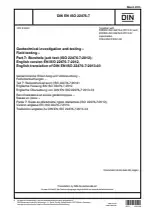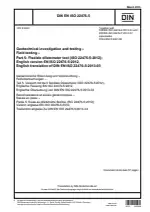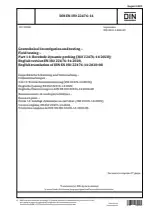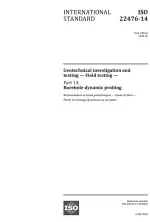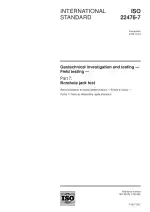Geotechnical Investigation and Testing - Field Testing - Part 7: Borehole Jack Test
Also Known As:
The DIN EN ISO 22476-7 standard focuses on the use of the borehole jack test as a method of field testing in geotechnical investigations. This standard is in line with EN 1997-1 and EN 1997-2, which provide guidelines for geotechnical design.
The borehole jack test is a technique used to assess the deformability characteristics of the ground. It involves applying a controlled hydraulic pressure to a sealed borehole, thereby inducing horizontal stress on the surrounding soil. By measuring the resulting displacement of the soil, engineers can evaluate parameters such as horizontal stress, modulus of deformability, and stiffness of the ground.
This standard provides detailed guidance on the procedure for conducting the borehole jack test, including the equipment required, the installation of the test equipment, and the measurement and interpretation of the results. It also discusses the potential sources of error and provides recommendations for minimizing them.
| Descriptors | Bore hole walling, Bore holes, Civil engineering, Composition of the ground, Construction, Definitions, Descriptions, Designations, Dilatometers, Drift expanding tests, Dynamic sounding rods, Earthworks, Expand, Exploration, Exploratory drilling, Field investigations, Field test, Geotechnics, Ground pressure, Group of soils, Interpretations, Investigation condition, Investigations, Lateral pressure, Measuring instruments, Measuring uncertainty, Mechanical testing, Penetrant flaw detection, Penetration depths, Penetration tests, Penetrometers, Properties, Reconnaissance, Rocks, Site investigations, Sizing tools, Soil mechanics, Soil sampling, Soil science, Soil surveys, Soils, Soundings, Strain, Structural engineering, Subsoil, Technical data sheets, Test equipment, Test performance, Testing, Holes |
| ICS Codes | 93.020 - Earthworks. Excavations. Foundation construction. Underground works |
| Language(s) | English |
| File Size | 1.2 MB |

